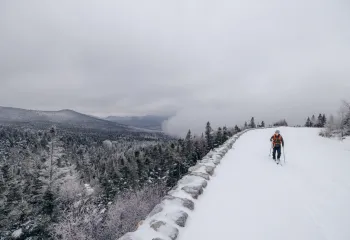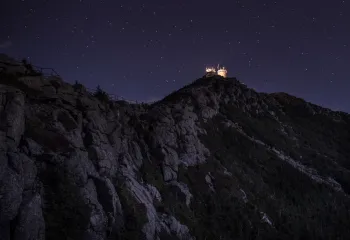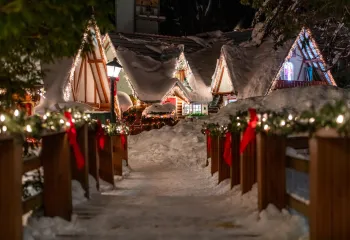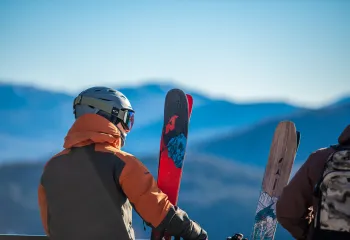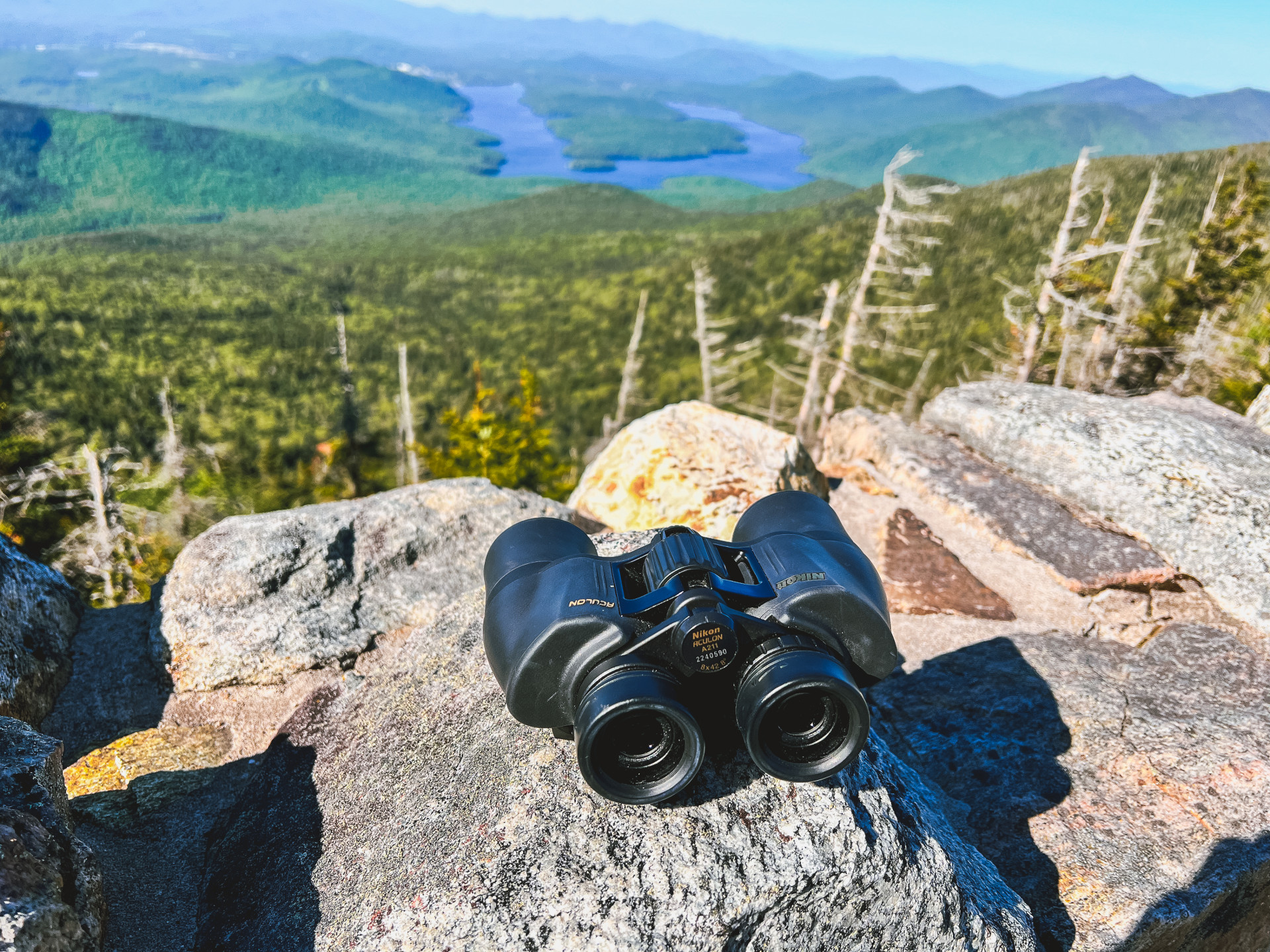
Sometimes, big mountains are the perfect habitat for small birds.
Here in the Adirondacks, Whiteface Mountain, the fifth highest peak in New York, is famously known for Olympic-level skiing and riding, breathtaking views, and unique hiking trails. But it’s so much more. Hidden amongst the craggy alpine trees and the summit highway, an elusive bird takes up residence for a few short months each year. To the Bicknell’s Thrush, Whiteface Mountain is a summer home.
Bicknell’s Thrush is a sought after species of many birders for a number of reasons. Its song calls us to the highest elevations in the Adirondacks, and with a little luck, it’s possible to see (and hear) this rare bird without much effort here in the Whiteface Region.
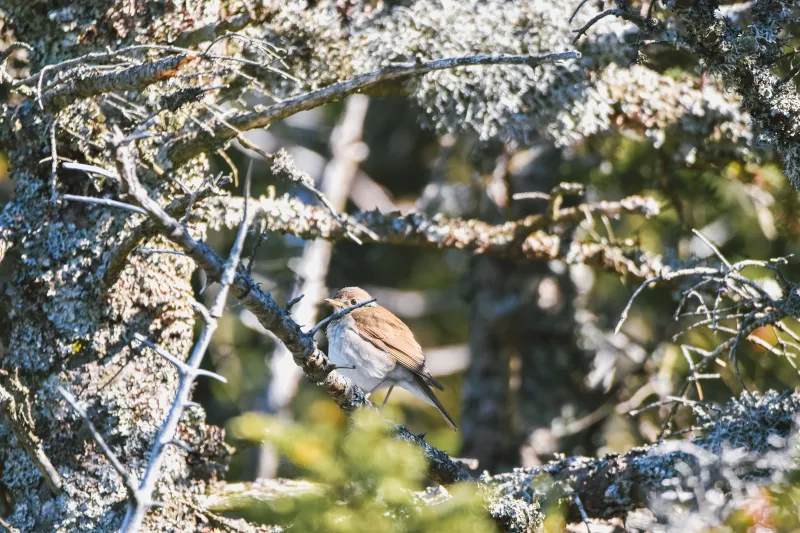
Species background
For being a small, seemingly dull gray/brown bird, Bicknell’s Thrush has a big, colorful natural history. In the late 19th century, Eugene Bicknell made the first scientific discovery of this species (in the Catskills!). Bicknell’s Thrush is in the thrush family (American Robin might be a more household name in the thrush family). Thrushes are small to medium-sized birds that typically dwell on the ground and feed on insects, other invertebrates, and fruits. They are similar to other thrush species in structure and sometimes looks (up until 1995, everyone thought Bicknell's Thrush and Grey-cheeked Thrush were the same species, but turns out, they are different), but Bicknell's is the only thrush that breeds in the alpine habitats of the Northeast.
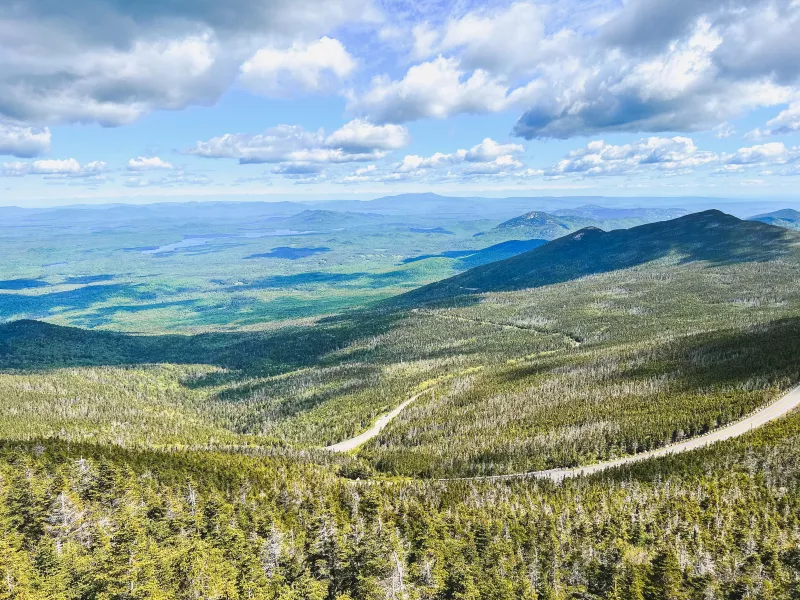
Love is in the air
Unlike some birds, male and female Bicknell’s Thrush are identical. When it comes to breeding, Bicknell’s Thrushes require very specific, rare habitats, limiting their summer range to a select few alpine “islands” in a sea of mid-elevation forests. The isolated high altitude peaks in the Adirondacks are the ideal habitat for Bicknell’s Thrush; they favor these fragile environments packed with dense spruce and fir trees that are so often seriously affected by wind and snow/ice. When those snows of winter start to arrive in the Adirondacks, though, Bicknell’s Thrush packs up and heads to Hispaniola. It’s estimated that 90% of the population winters there.
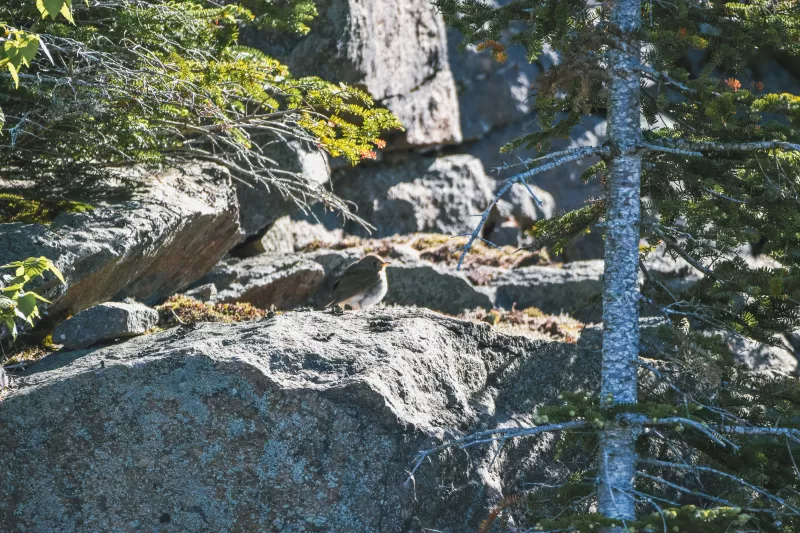
Birds like Bald Eagles and Canada Geese mate for life with one partner. Bicknell’s Thrushes do things a little differently. Females will mate with more than one male, a behavior not observed in other thrushes. Sometimes, up to four males will perform nest duties and help raise nestlings. Females lay 3-4 eggs, incubating for about two weeks. The young grow to completely full-feathered adults in less than two weeks!
Conservation
Unfortunately, due to such limited breeding habitat distribution, Bicknell’s Thrush is a threatened species on the decline. High elevation boreal habitat is also declining across much of the world due to a changing, warming climate. Another factor that is contributing to the species decline is mercury poisoning. We mostly hear about this in charismatic species like Common Loons, but Bicknell’s Thrushes also are susceptible to the effects of mercury, with levels tending to increase as altitude gains. Interpretive panels along the road give information on Bicknell's Thrush and other elements of this high altitude environment.
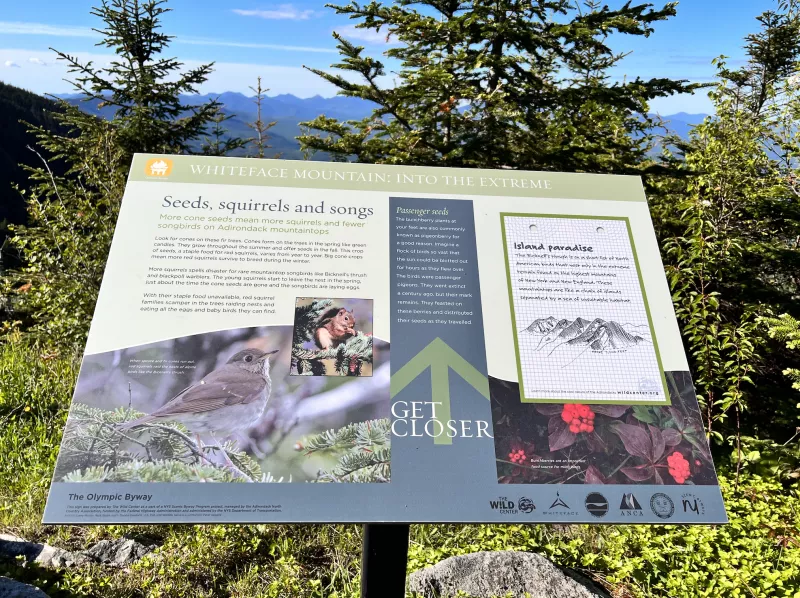
Observations
Curious to see a Bicknell’s Thrush for yourself? Thanks to Franklin D. Roosevelt, it’s not hard for you to get into the appropriate habitat! Since they nest in the highest elevations of the Adirondacks, reaching that range would usually require a long hike up rugged terrain through the night if you wanted to catch the dawn chorus. But with the opening of the Whiteface Veterans’ Memorial Highway, you can drive practically to the Bicknell’s Thrush front door! The highway, which opened in 1935, makes it accessible for everyone to A) take in outstanding vistas and B) observe the isolated, shy Bicknell’s Thrush.
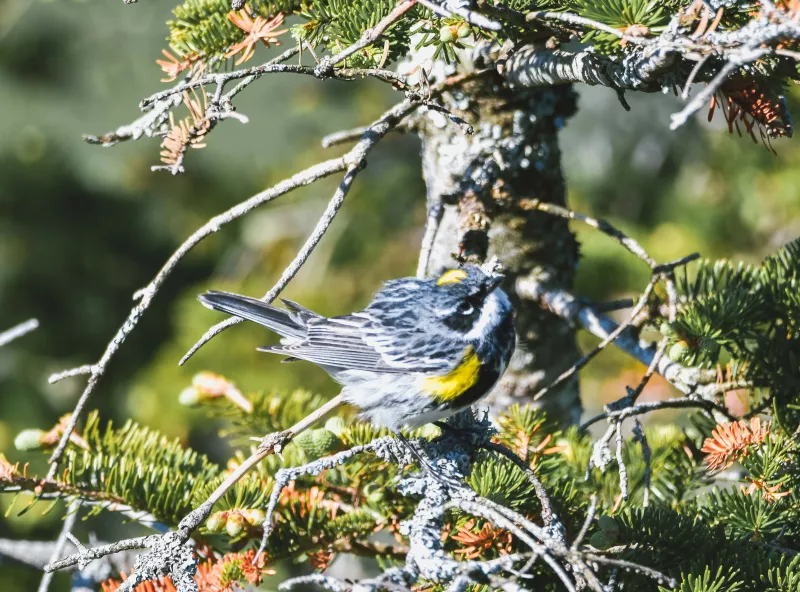
On a recent trip up the mountain, I observed multiple birds singing and foraging. It was a life bird for me, and an experience I’ll never forget. As we started our drive up the highway, we heard a similar thrush species singing: the Swainson’s Thrush. At quick glance, Swainson’s Thrush looks very similar to Bicknell’s, but Swainson’s are more olive in color, have a light brown ring around their eyes, and clearly defined spots on their upper breast. As for songs, the Swainson’s song is more flute-like, while the Bicknell’s song sounds more like another instrument: a synthesizer.
As you travel up in elevation along the highway, the diversity of bird species decreases (which makes sense because you are entering a small habitat zone that requires very specialized behaviors). Other species you might see in the high elevation boreal habitat on Whiteface Mountain are: Yellow-bellied Flycatcher, Ruby-crowned Kinglet, Blackpoll Warbler, and Common Raven. We even saw a Black-backed Woodpecker and heard a species shyer than Bicknell’s, a Boreal Chickadee. Before you get into the coniferous-only habitat nearer the summit, you could find all sorts of warblers, Winter Wrens, White-throated Sparrows, Dark-eyed Juncos, and Blue-headed Vireos in the mixed coniferous-deciduous forest.
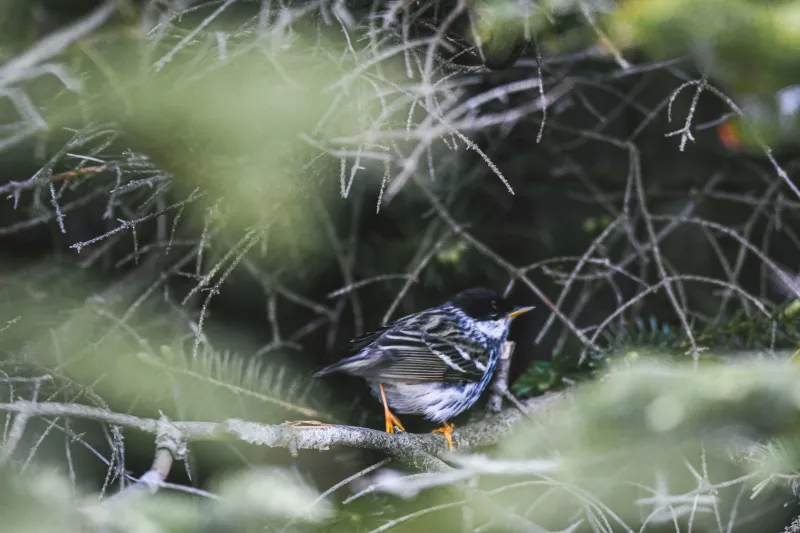
A birding trip to Whiteface Mountain is not about finding a large number of species; you aren’t going to have a list with 50+ different birds. No, this trip is about observing rare alpine birds, something that is really special and will surely be a highlight of your birding career!
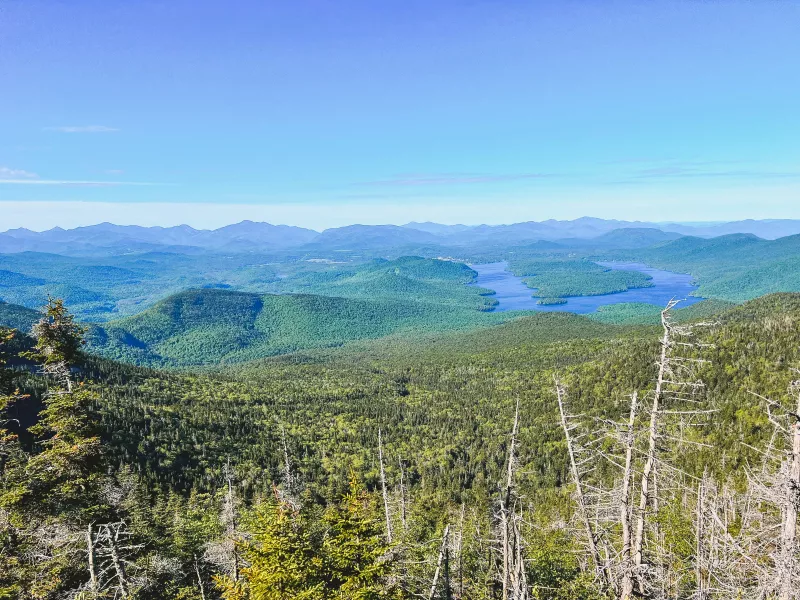
Mark your calendar
Ready to add Bicknell’s Thrush to your life list? The Adirondacks contain the largest area of suitable habitat in eastern North America for this species, harboring maybe 25% of the known breeding pairs. This is as good as it gets for high elevation accessible birding! (Mount Washington in New Hampshire is the only other place with a road leading into Bicknell’s habitat.) The Whiteface Region is also home to many other habitats and bird species. You can listen for songbirds at Lake Everest, see Ospreys hunt on Taylor Pond, and visit a lowland boreal peatland at Silver Lake Bog. You can find your "nest away from nest" at a comfortable motel and find your own meal at a local restaurant. Don’t just take my word for it - plan your trip today and see why everyone is flocking here.

